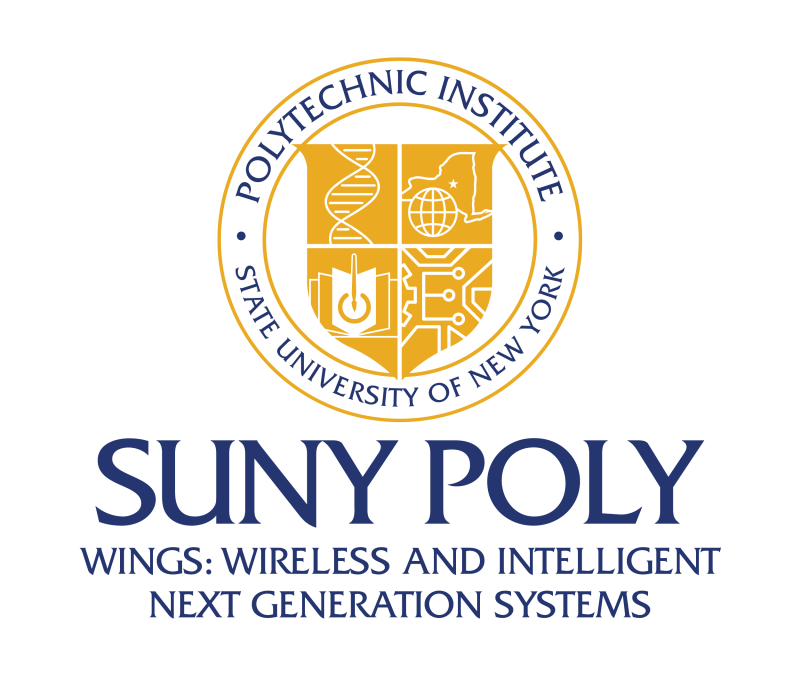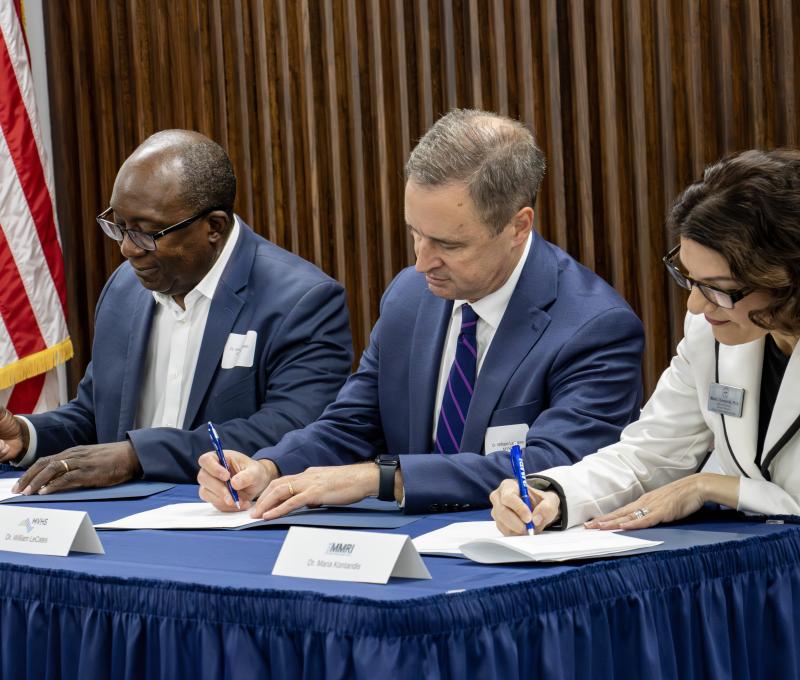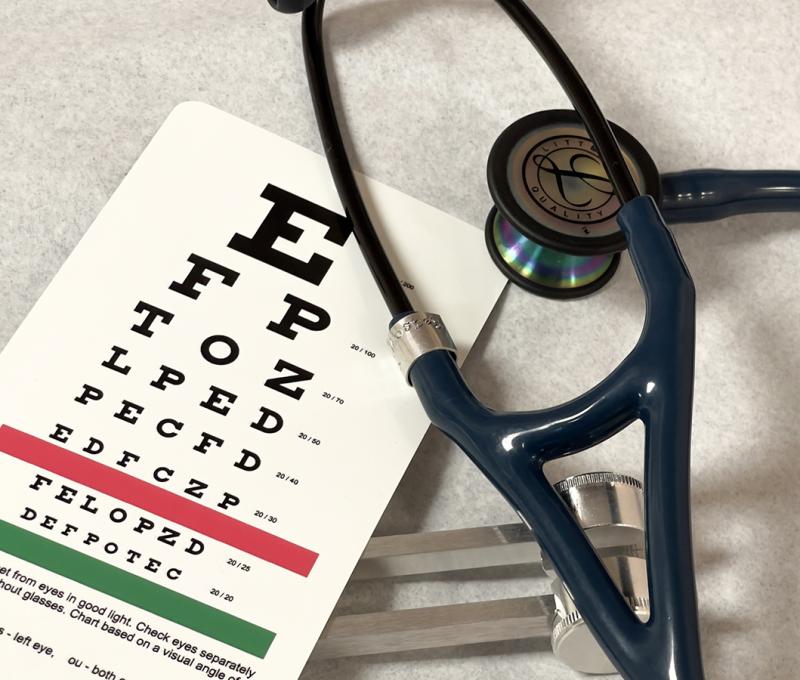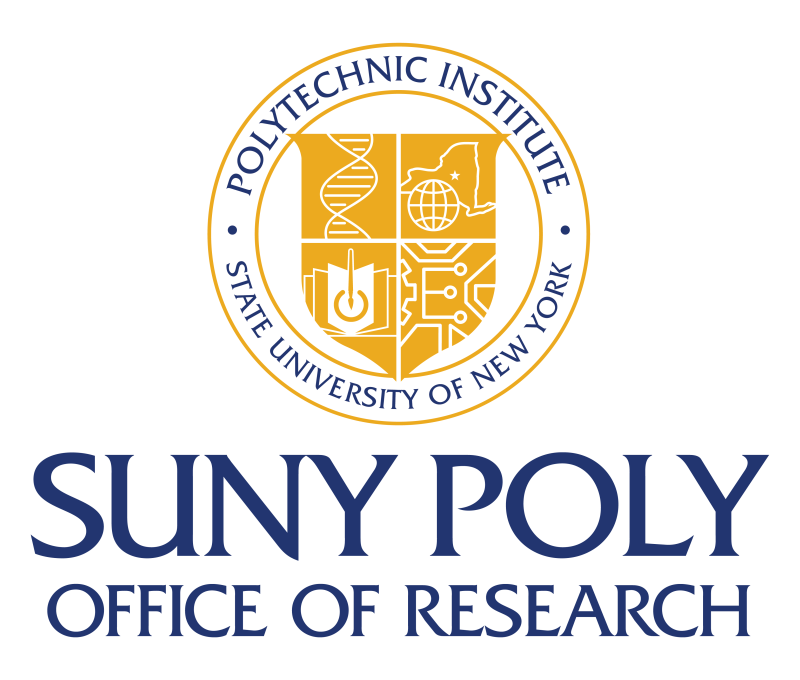SUNY Poly Awarded $400,000 by National Science Foundation for Research That Could Lead to More Efficient, Low-Dose Medical X-ray Imaging and More Accurate Radiation Detection

For Release: Immediate – August 16, 2017
Contact: Steve Ference, Director of University Communications
(518) 956-7319 | sference@sunypoly.edu
Grant from NSF supports using quantum dot waveguides with an integrated photodetector to improve U.S. nuclear security and healthcare imaging via enhanced X-ray detection capabilities
ALBANY, NY – SUNY Polytechnic Institute (SUNY Poly) announced today that Professor of Nanoscience Dr. Serge Oktyabrsky has been selected to receive $400,000 in federal funding from the National Science Foundation. The grant enables the development of quantum dot-based (QD) technologies, but the research could ultimately help unlock a world where medical X-ray machines provide a more complete, three-dimensional image with a lower dose of radiation to the patient, as well as the faster, more accurate detection of radiation to keep nuclear power generation safe or help thwart a nuclear attack, for example.
Additionally, the SUNY Poly research will enable educational opportunities for students, and, notably, is the first result of SUNY Poly’s collaborative work on novel detectors for high-energy physics with Fermilab, America’s particle physics and accelerator laboratory, located in Illinois.
“On behalf of SUNY Poly, I am proud to congratulate Professor Oktyabrsky for this exciting research that applies cutting-edge nanotechnology principles to significant concerns of our day, potentially improving medical care or helping to detect radiation to keep people safe,” said SUNY Poly Interim President Dr. Bahgat Sammakia. “This grant showcases SUNY Poly’s research expertise, what our globally recognized faculty is capable of, and how SUNY Poly’s research directly leads to technologies that can improve all of our lives.”
“This latest National Science Foundation grant is a testament to SUNY Poly’s state-of-the-art resources that, when combined with the institution’s faculty and their know-how, can drive incredible research that opens the door to devices at the smallest scale that can have an outsized impact on the quality of our lives,” said SUNY Poly Vice President of Research Dr. Michael Liehr.
“I would like to thank the National Science Foundation for recognizing this novel materials research aiming at the ultrafast detection of single X-ray photons and energetic particles that can improve a number of technologies which are critical for our health and safety. Utilizing quantum dots in combination with a semiconductor waveguide and photodetector, our approach could more efficiently produce tomographic X-ray images for patients, improve spectroscopic accuracy and turnaround time in nuclear security, and enhance particle identification capabilities in high-energy physics. As a result, this research can positively impact our lives and potentially reduce risks to society once implemented,” said Professor Oktyabrsky. “I am grateful for our partnership with Fermilab that has guided the direction of this research, and I look forward to the student opportunities that can arise from this intriguing area of scientific exploration.”
The NSF grant will advance research that is based on quantum dots, which are semiconductor particles that are typically only a few nanometers in size. By fabricating QDs to specific sizes and shapes, they can be made to emit light very quickly, providing a unique scintillation material, which is both fast and efficient. By utilizing QDs embedded in a semiconductor waveguide, which guides the resultant light waves without significant energy loss, coupled with a small, fast, and efficient photodetector, the ensemble is designed for the ultrafast detection of single X-ray photons and energetic particles and can be used to implement low-dose, three-dimensional X-ray-based medical imaging, for example. It could also lead to improved accuracy as it relates to the detection of specific radioactive materials through spectroscopy. The ability to more quickly and accurately label a substance as hazardous or safe could lead to greater nuclear security, in addition to providing future commercialization opportunities as further applications are realized.
Additionally, the QD research will also provide support of a SUNY Poly graduate student’s research, leading toward a Ph.D. in nanoscale engineering. A new optical nanomaterials laboratory is also planned to be led by Dr. Oktyabrsky, where K-12 students and science teachers will be able to engage and learn more about this exciting area of research during visits to SUNY Poly’s Albany campus.
####################
SUNY Polytechnic Institute. SUNY Polytechnic Institute (SUNY Poly) is New York’s globally recognized, high-tech educational ecosystem, formed from the merger of the SUNY College of Nanoscale Science and Engineering and SUNY Institute of Technology. SUNY Poly offers undergraduate and graduate degrees in the emerging disciplines of nanoscience and nanoengineering, as well as cutting-edge nanobioscience and nanoeconomics programs at its Albany location and undergraduate and graduate degrees in technology, including engineering, cybersecurity, computer science, and the engineering technologies; professional studies, including business, communication, and nursing; and arts and sciences, including natural sciences, mathematics, humanities, and social sciences at its Utica/Rome location. Thriving athletic, recreational, and cultural programs, events, and activities complement the campus experience. As the world’s most advanced, university-driven research enterprise, SUNY Poly boasts billions of dollars in high-tech investments and over 300 corporate partners since its inception. For information visit www.sunypoly.edu.








